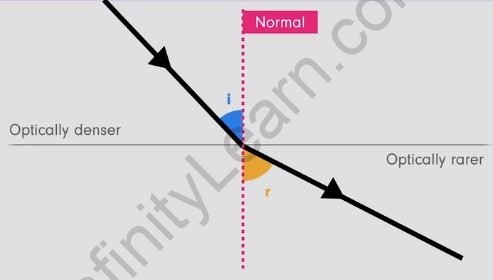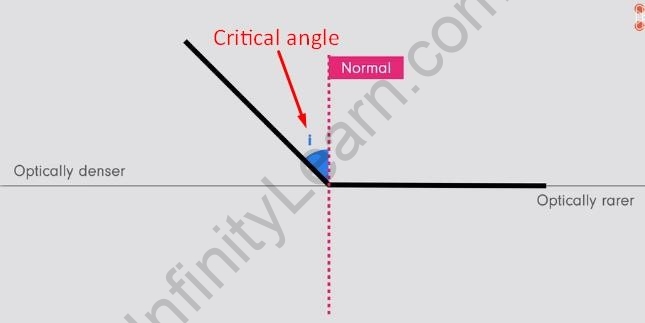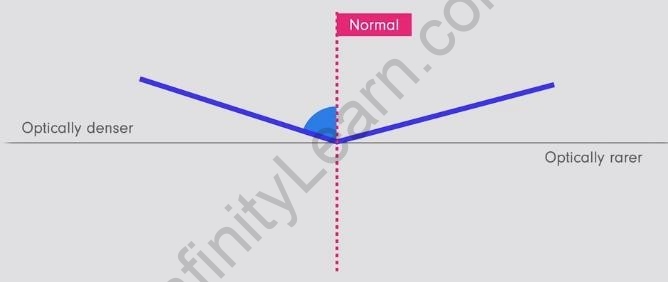Table of Contents
Table of Contents
- Formation of a Rainbow
- Summary
- Did You Know?
- What’s Next?
In the previous segment, we learnt about the Dispersion of light. In this segment, we will learn how rainbows are formed.
How is a rainbow formed?
- White light and tiny water droplets are required for the formation of a rainbow. It is formed due to refraction and total internal reflection.
- In the rainy season, many water droplets are present in the atmosphere and hence we mostly see the rainbow in the rainy season.
- When the light travels from an optically denser to an optically rarer medium, it bends away from the normal. This phenomenon is called the refraction of light.

Refraction of light
- The greater the angle of incidence, the greater will be the angle of refraction.
- But for an angle called the critical angle, the refracted ray will be perpendicular to the normal line.

Critical angle
- If the angle of incidence is increased further, then the refracted ray will now travel through the incident medium. This phenomenon is called total internal reflection.

Total internal reflection
- The white light of the sun is composed of seven primary colours. A water droplet disperses the white sunlight at the entry point.
- This dispersed light falls on the rear side of the droplet due to total internal reflection, as the angle of incidence at the second incidence for each coloured light is more than the critical angle.
- So these different coloured rays are now at the air-water interface again for the third time, but this time, however, the total internal reflection does not occur and they bend in air.







